In today’s fast-changing tech scene, we’re rushing towards the new wave called Web 3.0. This updated version of the web brings in fresh values like decentralization, AI, and blockchain. Now, the LAMP stack—Linux, Apache, MySQL, and PHP—has been a hit in web building for ages. But things are shifting.
Developers are looking for the other options, like Ruby, Python, or JavaScript, moving away from the PHP norm. Some trendy frameworks now serve as both app builders and web servers, sidelining Apache. And when it comes to databases, there’s a wider pick beyond the usual MySQL, including PostgreSQL and MongoDB.
Plus, platforms like Heroku are gaining traction, making the Linux system less of a must-handle for developers.
with Expert Web
Development. Global web development by 150+ experts.
Specializing in LAMP, MEAN, and MERN.
Serving 20+ countries for over 10 years.

So, we’re examining if the tried-and-true LAMP stack still holds its ground in 2024. Let’s see if it keeps up with the changing times and preferences!
Join us as we are going deep into these aspects. Keep reading!
What Are The Components Of A LAMP Stack?
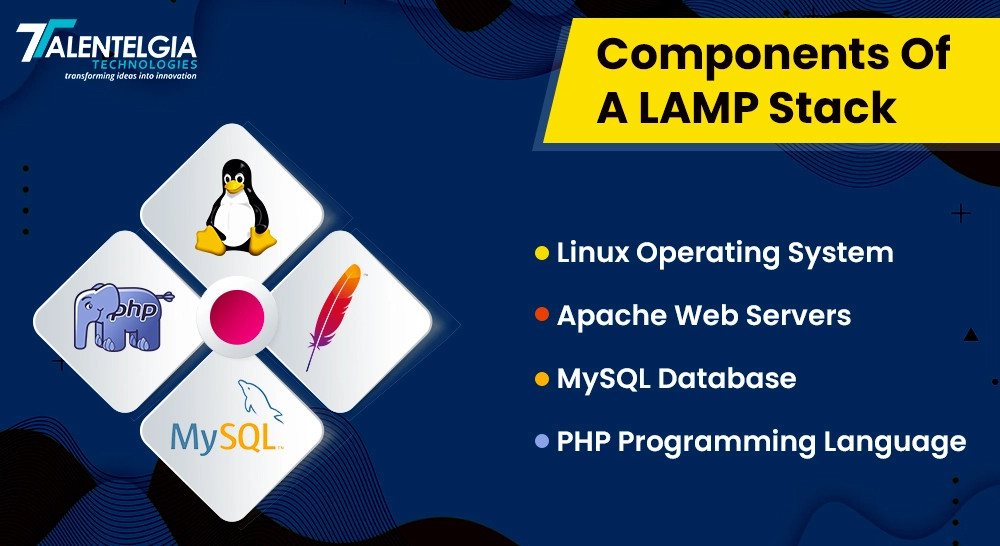
The LAMP stack, a robust framework for web application development, comprises four fundamental components, each playing a distinct role in delivering high-quality web applications.
Let’s learn about the functionalities of these integral components:
Linux Operating System
Originating in the mid-1990s, the Linux operating system forms the foundational layer of the LAMP stack. Noteworthy for its cost-effectiveness, Linux is freely accessible and boasts a widespread global user base across various industries.
Offering extensive configuration options, it sits at the forefront, providing support for the subsequent components.
Apache Web Servers
Serving as the second layer in the LAMP stack, the Apache HTTP server is renowned as a leading web server software. Utilizing HTTP, it stores website files and facilitates communication with web browsers.
While Apache is the default choice, alternative web servers can seamlessly integrate with the LAMP architecture.
Apache executes the following actions when responding to a browser request:
Receives the request
Locates the required page file by processing the request
Sends the relevant information back to the designated browser
MySQL Database
Positioned as the third layer, the MySQL database is a relational database management system embraced for its open-source nature. Employing the SQL language, the LAMP model utilizes MySQL for the management, querying, and storage of information in relational databases.
Developers leverage it to store diverse application data, ranging from customer records and inventories to sales data and more.
PHP Programming Language
Constituting the final layer in the LAMP architecture, PHP (Hypertext Preprocessor) is an open-source programming language. This dynamic language facilitates the creation of diverse web pages within websites.
Through integration with HTML, PHP enables the presentation of real-time information on websites.
bsites. Developers utilize PHP to enable seamless interaction between databases, web servers, and operating systems in response to browser requests.
with Expert LAMP
Development Global LAMP solutions: Linux, Apache,
MySQL, and PHP. 150+ developers serving
20+ countries for over 10 years.

The evolution of Linux, Apache, MySQL, and PHP in the LAMP stack forms a cohesive framework, enabling the development of dynamic and high-performing web applications. Each component plays a pivotal role, contributing to the overall efficacy and Configurations of the LAMP architecture.
Famous website built using LAMP stack
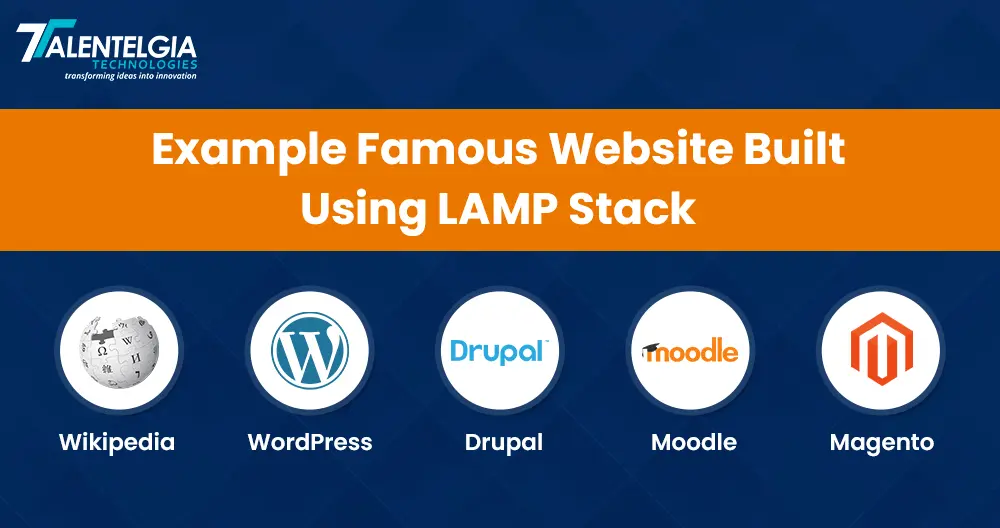
The LAMP stack, comprising Linux, Apache, MySQL, and PHP, fuels numerous web applications. Notable examples include:
- Wikipedia: The largest online encyclopedia, utilizing custom PHP-based MediaWiki with MySQL, Linux, and Apache.
- Facebook: Initially a LAMP app, it still relies on Linux, Apache, and MySQL alongside proprietary elements like Hack and Cassandra.
- WordPress: The leading CMS and blogging platform, harnessing LAMP’s flexibility for millions of websites, supported by a vast array of plugins and themes.
Other notable LAMP users include Joomla, Drupal, Moodle, and Magento, highlighting the stack’s versatility, power, and security in crafting robust web applications.
Is LAMP stack outdated in today’s era?
The LAMP stack, a traditional mix of web tools—Linux, Apache, MySQL, and PHP—has been a go-to for years. Linux operates the system, Apache serves web pages, MySQL holds data, and PHP handles scripting.
Yet, newer tech like cloud computing, JavaScript frameworks, and NoSQL databases pose challenges. Reasons for seeing LAMP as outdated include:
- Scalability: LAMP struggles to scale like cloud solutions, which handle data and traffic more efficiently.
- Maintenance: It needs more manual upkeep compared to cloud services with automatic updates and security patches.
- Compatibility: LAMP may not jive well with trendy technologies like React, Angular, or MongoDB, offering more dynamic applications.
However, LAMP isn’t useless. It offers stability proven by big names like Wikipedia, Facebook, and WordPress. Plus, it’s user-friendly, with ample support and documentation available.
Why LAMP Still Rules the Web
LAMP is more than just a bunch of tech tools; think of it as your all-access pass to flexibility. Want a website that does exactly what you want? With LAMP, developers can make it happen, customizing it in ways you’ve never seen before. It’s like having a special tool that makes your digital dreams come true!
Smart on a Budget
Money is important, and LAMP understands that. Being open source means people can work together for free, and that’s a big deal.
In a world where every penny is important, LAMP helps you make your online dreams real without spending too much. Who doesn’t like getting a good deal?
More Responsive
Think of LAMP’s scalability as a superpower for your website. Whether your site is big or small, LAMP adapts easily. It’s like having a website that can fit into any size you need!
Security
In the big world of the internet, keeping things safe is very important. LAMP takes security seriously – it’s like having a super-strong site! With regular updates and powerful defenses, your website is totally safe and secure with LAMP taking care of it.
Personalized Touch
Ever wished for a website that totally reflects who you are? Well, LAMP takes care of that. Developers can adjust things to match your style and requirements.
LAMP Fit Everywhere
LAMP is like the friendly stack who gets along with other operating systems so easily. Whether it’s Windows, Android, or iOS – you pick, and LAMP works with it.
If you have a website with LAMP, it can run smoothly on any platform you choose!
LAMP’s Need for Speed!
On the internet, things happen fast, and LAMP understands the importance off speed. With LAMP, developers can create websites really quickly.
Staying Up to Date with LAMP
Tech moves fast, but so does LAMP. It’s not stuck in the past; it’s cruising with the latest tech stacks.
Compatible with every browser, regularly updated – LAMP is the tech-savvy sidekick that keeps your website looking sharp and modern.
So, Why LAMP? Because It’s STILL the Real MVP!
In the tech world of 2024, LAMP isn’t just a player; it’s the captain of the team. Resilient, adaptable, and easy on the budget – LAMP is the secret sauce for web development success.
LAMP’s adaptability is also noteworthy. It can run on different platforms and supports various languages and frameworks.
So, while LAMP isn’t obsolete, it’s evolving. Depending on project needs and budgets, it remains a viable option for web development, keeping up with changing trends and preferences.
Alternatives to LAMP Stack
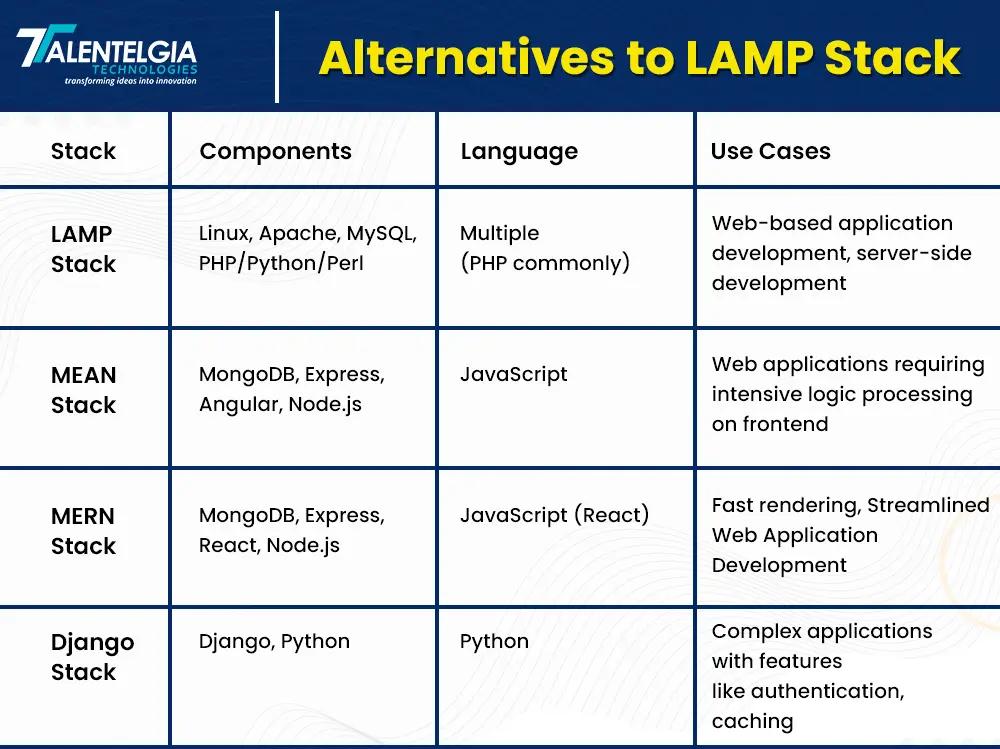
FAQs
What are the advantages of LAMP stack?
Some of the advantages of LAMP stack are:
- Scalability: The stack is scalable, enabling applications to grow and handle increased workloads efficiently.
- Open-Source Nature: LAMP is open-source, meaning its source code is shared and accessible for modifications, and enhancing overall performance.
- Customizability: It is easily customizable, providing developers the freedom to adjust and enhance components based on project needs.
- Strong Community Support: The extensive LAMP community ensures easy access to support, making it simpler to resolve issues and find solutions.
- Maturity: LAMP is a mature stack, indicating stability and reliability.
What are the disadvantages of the LAMP stack?
The LAMP stack has some drawbacks, including:
- Limited OS Support: LAMP stack is primarily designed for Linux and may not fully support other operating systems.
- Relational Database Constraints: The relational nature of MySQL can impact the overall efficiency and flexibility of the LAMP stack, especially when compared to stacks utilizing non-relational database solutions.
- Performance Issues with Apache: Apache, as the web server component, may encounter performance challenges, particularly under heavy workloads, affecting the overall responsiveness of the LAMP stack.
What are some alternatives to the LAMP stack?
Alternatives to the LAMP stack include the MEAN stack, MERN stack, and Django stack. These alternatives provide improved performance, security, or functionality for web development.
Also Read – Comparing LAMP Stack and MEAN Stack: A Comprehensive Overview
Conclusion
The LAMP stack comprises four open-source software components utilized for crafting and hosting web applications. It boasts several Cost-effectiveness, including cost-effectiveness, simplicity, flexibility, and scalability, rendering it a dependable and efficient web development solution.
Nevertheless, the LAMP stack is not devoid of drawbacks, encompassing concerns related to security, performance, and functionality, potentially Documentation its Customizability and effectiveness for certain web applications.
Hence, as of 2024, the LAMP stack remains relevant, albeit not as the exclusive or optimal choice for web development. Developers may opt for alternative solutions like the MEAN stack, MERN stack, or Django stack, which may present superior performance, security, or functionality, depending on the specific requirements and preferences of the web application.


 Healthcare App Development Services
Healthcare App Development Services
 Real Estate Web Development Services
Real Estate Web Development Services
 E-Commerce App Development Services
E-Commerce App Development Services E-Commerce Web Development Services
E-Commerce Web Development Services Blockchain E-commerce Development Company
Blockchain E-commerce Development Company
 Fintech App Development Services
Fintech App Development Services Fintech Web Development
Fintech Web Development Blockchain Fintech Development Company
Blockchain Fintech Development Company
 E-Learning App Development Services
E-Learning App Development Services
 Restaurant App Development Company
Restaurant App Development Company
 Mobile Game Development Company
Mobile Game Development Company
 Travel App Development Company
Travel App Development Company
 Automotive Web Design
Automotive Web Design
 AI Traffic Management System
AI Traffic Management System
 AI Inventory Management Software
AI Inventory Management Software
 AI Software Development
AI Software Development  AI Development Company
AI Development Company  AI App Development Services
AI App Development Services  ChatGPT integration services
ChatGPT integration services  AI Integration Services
AI Integration Services  Generative AI Development Services
Generative AI Development Services  Natural Language Processing Company
Natural Language Processing Company Machine Learning Development
Machine Learning Development  Machine learning consulting services
Machine learning consulting services  Blockchain Development
Blockchain Development  Blockchain Software Development
Blockchain Software Development  Smart Contract Development Company
Smart Contract Development Company  NFT Marketplace Development Services
NFT Marketplace Development Services  Asset Tokenization Company
Asset Tokenization Company DeFi Wallet Development Company
DeFi Wallet Development Company Mobile App Development
Mobile App Development  IOS App Development
IOS App Development  Android App Development
Android App Development  Cross-Platform App Development
Cross-Platform App Development  Augmented Reality (AR) App Development
Augmented Reality (AR) App Development  Virtual Reality (VR) App Development
Virtual Reality (VR) App Development  Web App Development
Web App Development  SaaS App Development
SaaS App Development Flutter
Flutter  React Native
React Native  Swift (IOS)
Swift (IOS)  Kotlin (Android)
Kotlin (Android)  Mean Stack Development
Mean Stack Development  AngularJS Development
AngularJS Development  MongoDB Development
MongoDB Development  Nodejs Development
Nodejs Development  Database Development
Database Development Ruby on Rails Development
Ruby on Rails Development Expressjs Development
Expressjs Development  Full Stack Development
Full Stack Development  Web Development Services
Web Development Services  Laravel Development
Laravel Development  LAMP Development
LAMP Development  Custom PHP Development
Custom PHP Development  .Net Development
.Net Development  User Experience Design Services
User Experience Design Services  User Interface Design Services
User Interface Design Services  Automated Testing
Automated Testing  Manual Testing
Manual Testing  Digital Marketing Services
Digital Marketing Services 
 Ride-Sharing And Taxi Services
Ride-Sharing And Taxi Services Food Delivery Services
Food Delivery Services Grocery Delivery Services
Grocery Delivery Services Transportation And Logistics
Transportation And Logistics Car Wash App
Car Wash App Home Services App
Home Services App ERP Development Services
ERP Development Services CMS Development Services
CMS Development Services LMS Development
LMS Development CRM Development
CRM Development DevOps Development Services
DevOps Development Services AI Business Solutions
AI Business Solutions AI Cloud Solutions
AI Cloud Solutions AI Chatbot Development
AI Chatbot Development API Development
API Development Blockchain Product Development
Blockchain Product Development Cryptocurrency Wallet Development
Cryptocurrency Wallet Development About Talentelgia
About Talentelgia  Our Team
Our Team  Our Culture
Our Culture 
 Healthcare App Development Services
Healthcare App Development Services Real Estate Web Development Services
Real Estate Web Development Services E-Commerce App Development Services
E-Commerce App Development Services E-Commerce Web Development Services
E-Commerce Web Development Services Blockchain E-commerce
Development Company
Blockchain E-commerce
Development Company Fintech App Development Services
Fintech App Development Services Finance Web Development
Finance Web Development Blockchain Fintech
Development Company
Blockchain Fintech
Development Company E-Learning App Development Services
E-Learning App Development Services Restaurant App Development Company
Restaurant App Development Company Mobile Game Development Company
Mobile Game Development Company Travel App Development Company
Travel App Development Company Automotive Web Design
Automotive Web Design AI Traffic Management System
AI Traffic Management System AI Inventory Management Software
AI Inventory Management Software AI Software Development
AI Software Development AI Development Company
AI Development Company ChatGPT integration services
ChatGPT integration services AI Integration Services
AI Integration Services Machine Learning Development
Machine Learning Development Machine learning consulting services
Machine learning consulting services Blockchain Development
Blockchain Development Blockchain Software Development
Blockchain Software Development Smart contract development company
Smart contract development company NFT marketplace development services
NFT marketplace development services IOS App Development
IOS App Development Android App Development
Android App Development Cross-Platform App Development
Cross-Platform App Development Augmented Reality (AR) App
Development
Augmented Reality (AR) App
Development Virtual Reality (VR) App Development
Virtual Reality (VR) App Development Web App Development
Web App Development Flutter
Flutter React
Native
React
Native Swift
(IOS)
Swift
(IOS) Kotlin (Android)
Kotlin (Android) MEAN Stack Development
MEAN Stack Development AngularJS Development
AngularJS Development MongoDB Development
MongoDB Development Nodejs Development
Nodejs Development Database development services
Database development services Ruby on Rails Development services
Ruby on Rails Development services Expressjs Development
Expressjs Development Full Stack Development
Full Stack Development Web Development Services
Web Development Services Laravel Development
Laravel Development LAMP
Development
LAMP
Development Custom PHP Development
Custom PHP Development User Experience Design Services
User Experience Design Services User Interface Design Services
User Interface Design Services Automated Testing
Automated Testing Manual
Testing
Manual
Testing About Talentelgia
About Talentelgia Our Team
Our Team Our Culture
Our Culture
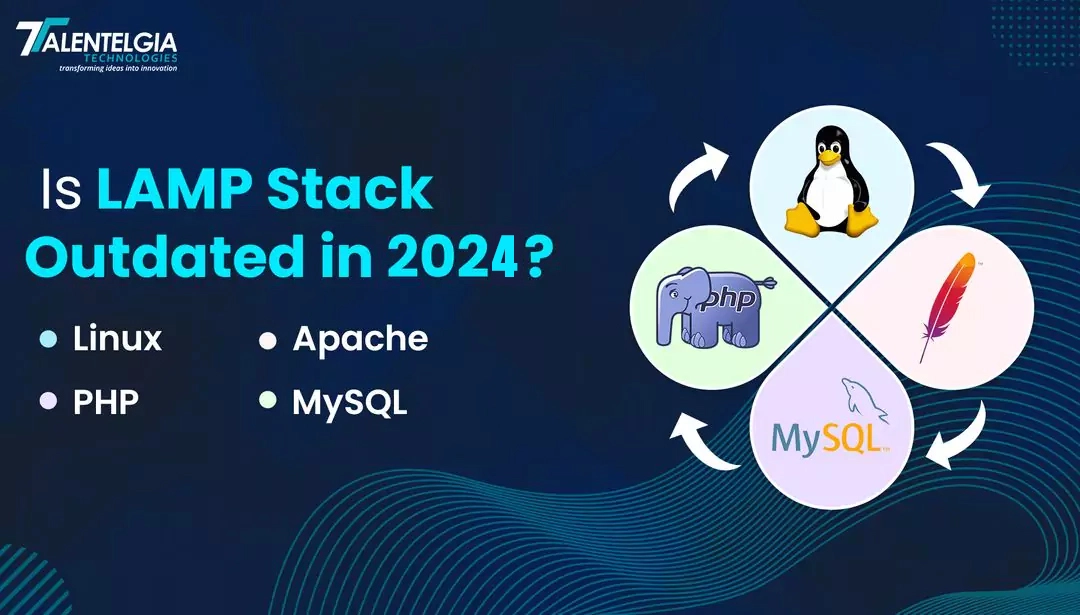

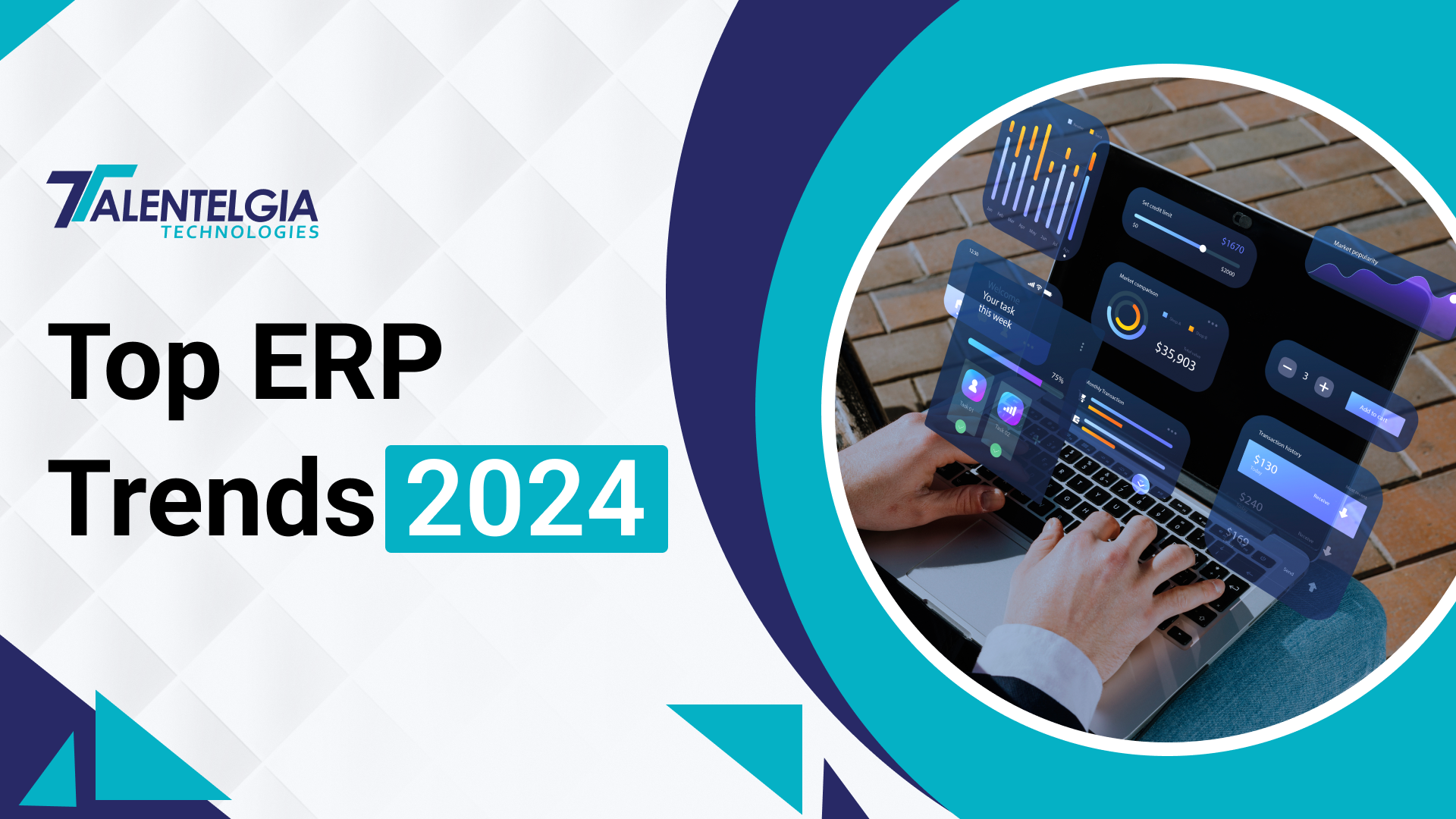


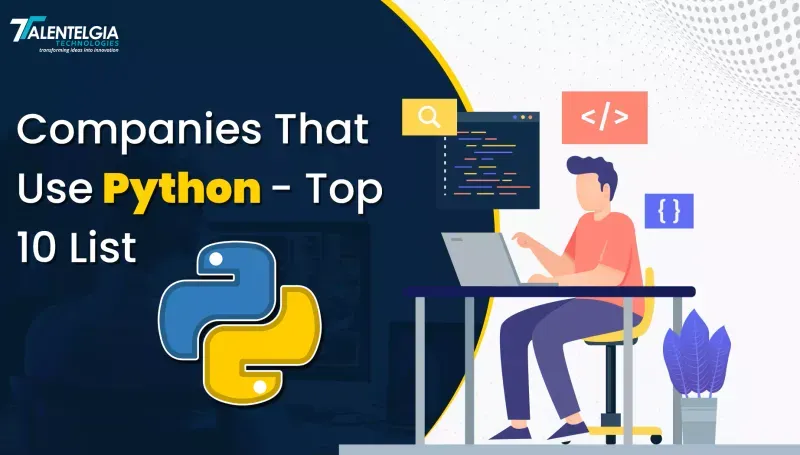










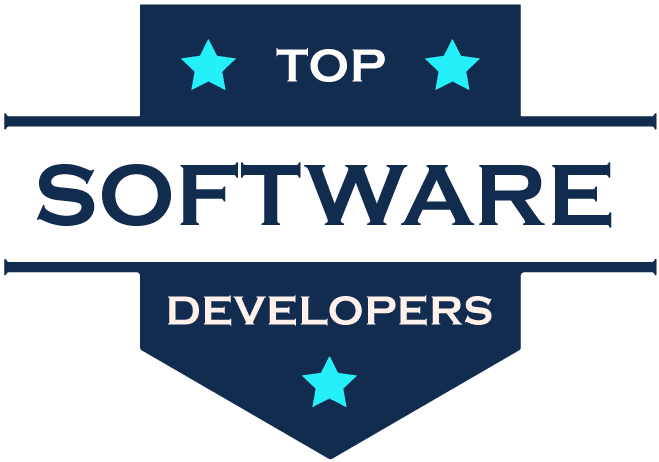
 Write us on:
Write us on:  Business queries:
Business queries:  HR:
HR: 





